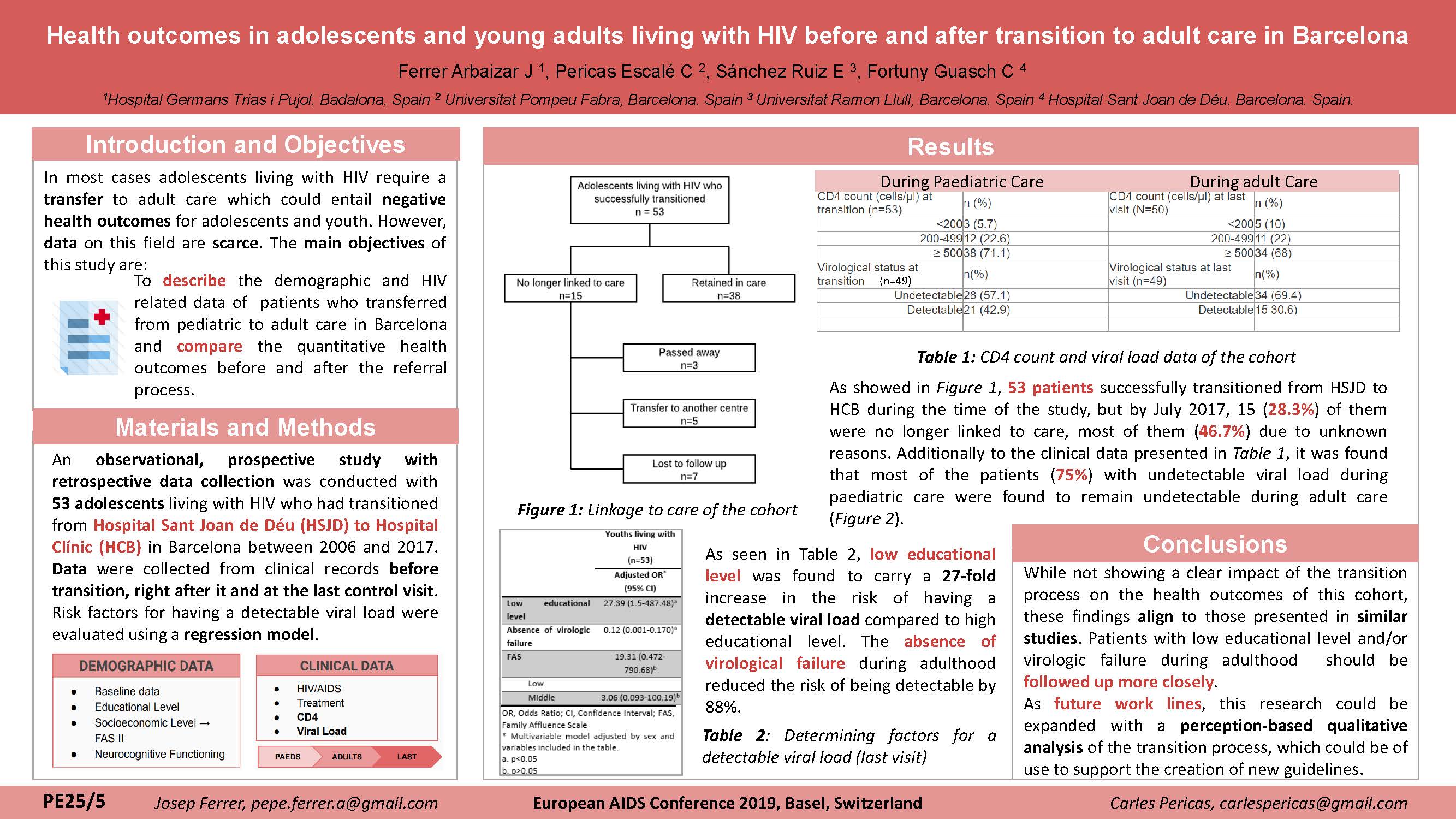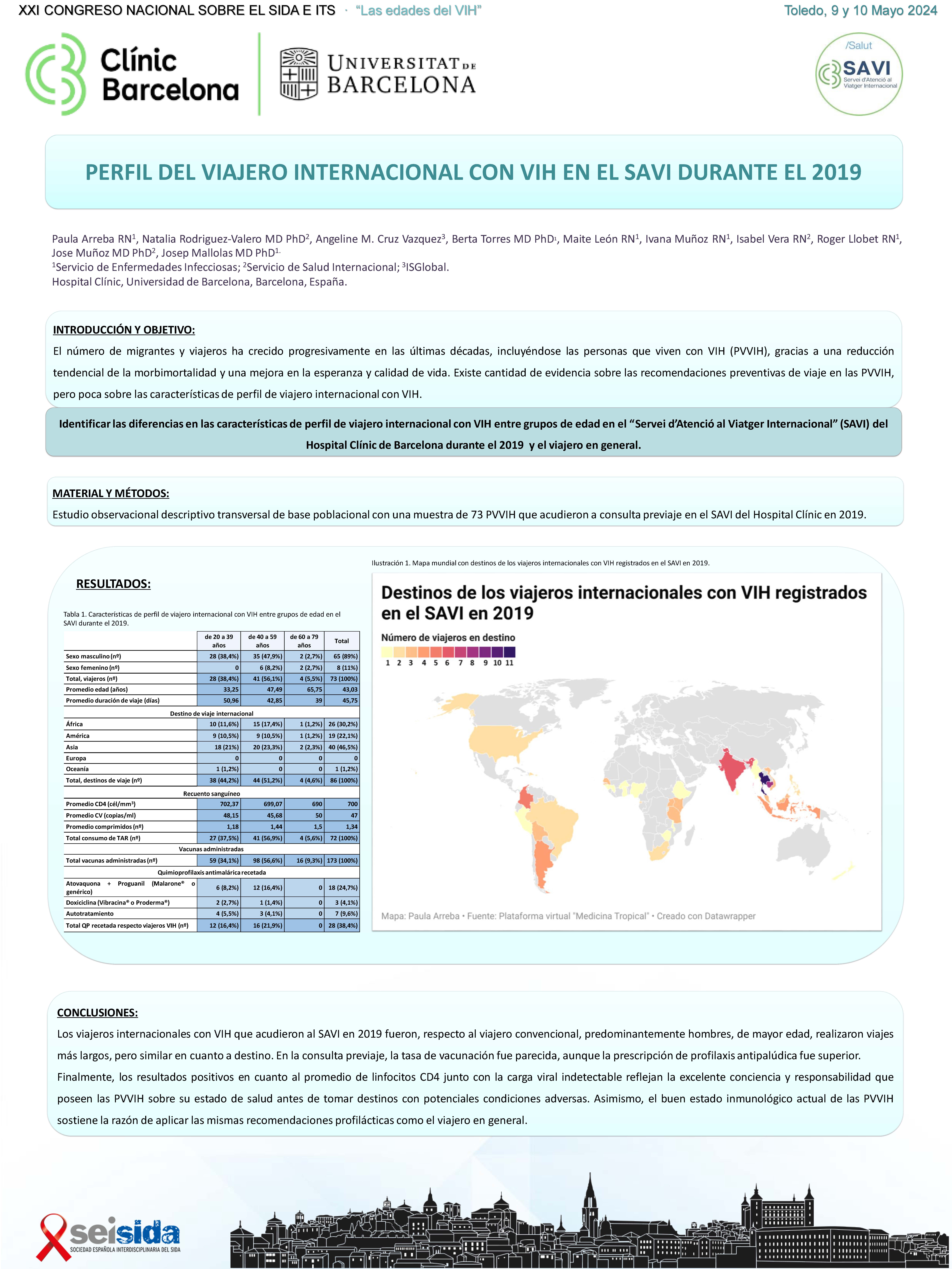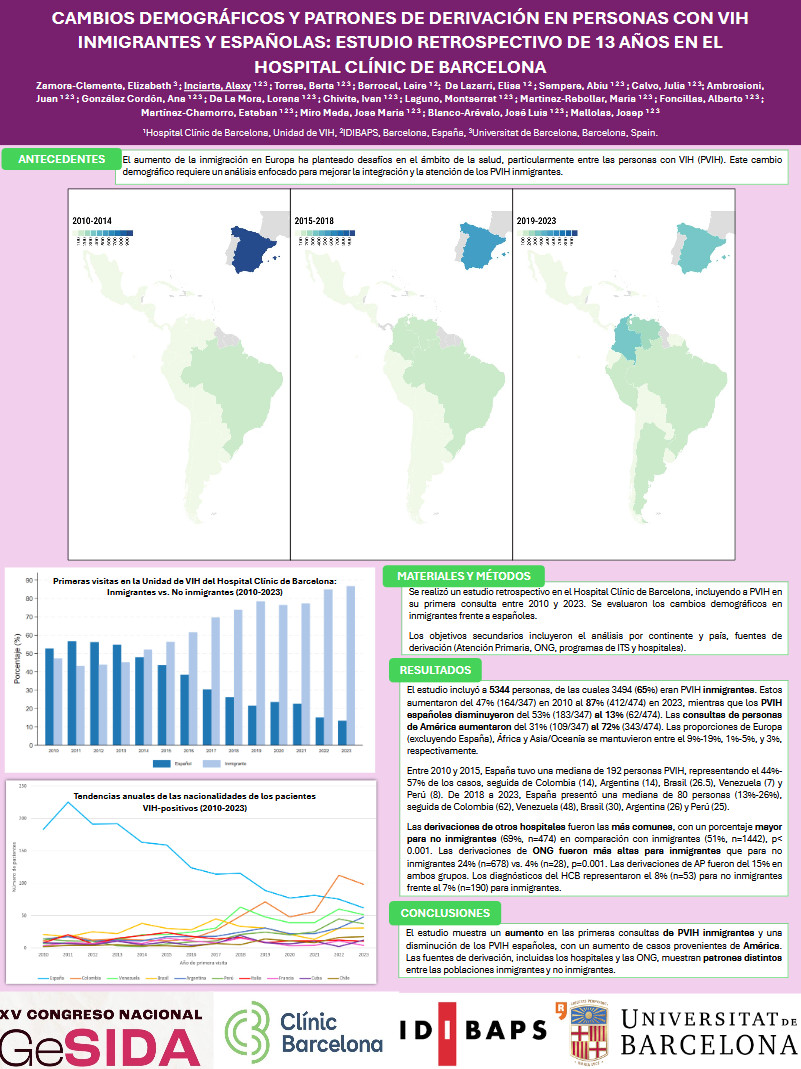Resum
Purpose: To describe the demographic and HIV related data of patients who transferred from paediatric to adult care in two centres of Barcelona and compare the quantitative health outcomes before and after the referral process.
Method: An observational, prospective study with retrospective data collection was conducted with 53 adolescents living with HIV who had transitioned from Hospital Sant Joan de Déu (HSJD) to Hospital Clínic (HCB) in Barcelona between 2006 and 2017. Data was collected from clinical records before transition, right after it and at the last control visit. Risk factors for detectable viral load were evaluated with a regression model that included sex, socioeconomic status, absence of virological failure during adult care and low educational level.
Results: 53 patients successfully transitioned from HSJD to HCB during the time of the study. 15 (28.3%) of them were no longer linked to care (3 deaths, 5 transferred to another centre and 7 lost-to-follow-up). Most of the patients (75%) with undetectable viral load during paediatric care were found to remain undetectable during adult care. Importantly, the results obtained with the multivariable regression model showed that low educational level was found to carry a 27-fold increase in the risk of having a detectable viral load in the last visit (aOR of 27.39 with a 95% CI of 1.5-487.48), while the absence of virological failure during adulthood could be a potential protective factor, as it reduced the risk of being detectable by 88% (aOR of 0.12 with a 95% CI of 0.001-0.170).
Conclusion: While not showing a clear impact of the transition process on the health of this cohort, these findings align to those reported in similar studies. Patients with virological failure during adulthood and low educational level should be followed up more closely.






